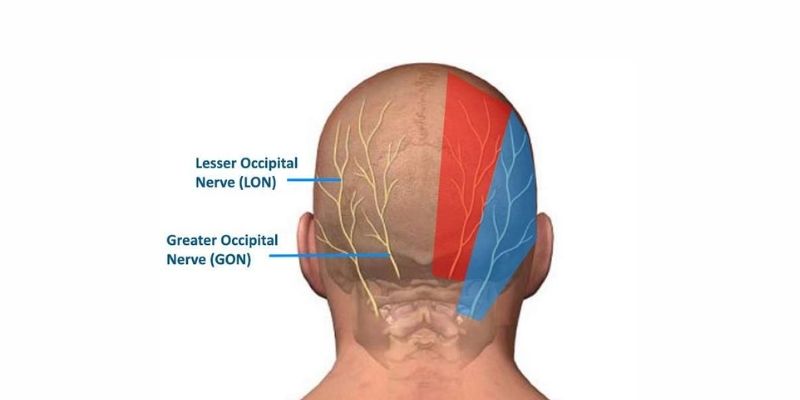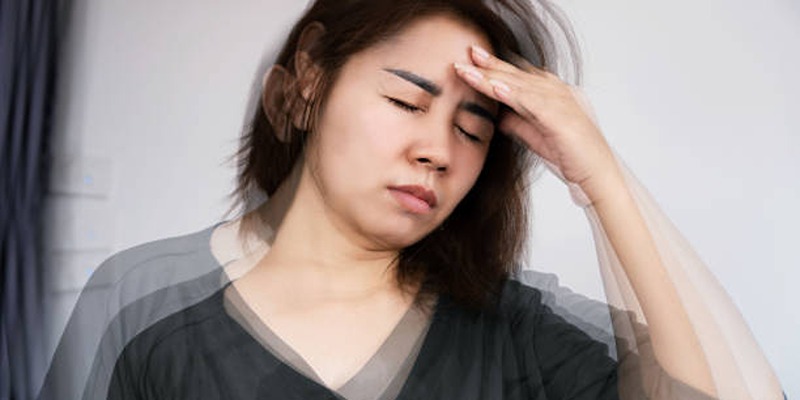The disorder known as occipital neuralgia produces back of the head and neck aches. It arises when the occipital nerves become irritated or inflamed from the top of the spinal cord to the scalp. This pain feels like an electric shock, throbbing or sharp. People with occipital neuralgia are often confused with those suffering from other types of headaches or neck discomfort.
Knowing the main warning signs helps you get a correct diagnosis and treatment sooner. Early discovery is crucial since this disorder might interfere with your daily life. Continuous pain could make concentration difficult, sleep problematic, or even lead to depression. The primary symptoms to be on the lookout for are discussed in this article so one may know when to visit a doctor.

What is Occipital Neuralgia?
Occipital neuralgia is a headache caused by inflamed or injured occipital nerves. The occipital nerves extend from the upper part of the spinal cord to the scalp, where they supply feeling to the back and upper areas of the head. When compressed, damaged, or inflamed, these nerves send pain signals that cause a distinct headache. Unlike most headaches, the pain from occipital neuralgia may be extremely intense, abrupt, stabbing, or occasionally, it seems like a continual, dull aching.
Usually beginning in the neck, the pain advances to the back of the head and occasionally extends behind the eyes. Several factors can lead to this disorder, including neck injuries, nerve compression from tight muscles or bone spurs, arthritis, and other medical conditions affecting the nerves. Sometimes, no obvious reason is discovered. Knowing occipital neuralgia facilitates diagnosis and appropriate therapy to aid in lowering pain and enhancing quality of life.
Key Warning Signs Of Occipital Neuralgia
Below are the key warning signs of occipital neuralgia that can help you recognize this painful nerve condition early.
Sharp, Electric-Shock Pain
Sharp, electric-shock-like pain is one of the occipital neuralgia's most crucial warning signals. Usually, this misery comes in waves. It sometimes feels like unexpected shocks or stinging at the rear of the head. People define it as either minutes or seconds of shooting agony. Though it comes and goes, this pain is severe when it strikes. It isn't like the dull discomfort of a typical headache. Pay attention if you suddenly get intense discomfort in your neck or scalp.
Pain Behind the Eyes
Even below the eyes, occipital neuralgia can provide forward-traveling discomfort. You can feel pressure or severe aching behind or around the eyes. Although it can occur on both sides, it usually affects just one side. Bright lighting or eye movement will aggravate it. It could indicate occipital nerve involvement if you experience neck or head pain and eye discomfort. One should pay great attention to this warning indication.

Sensitivity to Light and Touch
People suffering from occipital neuralgia sometimes find their scalp becomes very sensitive. One can get pain even from light contact or brushing the hair. Allodynia is the name given here. Wearing helmets or caps could be uncomfortable. Bright light could aggravate discomfort, particularly if the pain extends to the eyes. One of the main symptoms is this higher sensitivity.
Tenderness in the Neck and Base of the Skull
Tenderness or discomfort near the base of the skull and neck is another indication to be on alert. Pressing on the rear of your head or neck could cause you pain. The muscles in this area may occasionally seem tight or rigid. This sensitivity results from the occipital nerves in the neck running near the muscles and bones. An inflamed nerve can cause the surrounding tissues to swell. It could be occipital neuralgia if your neck feels sore or rigid, in addition to head pain.
Pain That Worsens with Neck Movement
Pain that worsens with neck movement is another common complaint. Turning your head from side to side or tilting it backward could aggravate your discomfort. Some folks find that forward neck bending causes additional pain. It results from neck motions stretching or pressing the occipital nerves. Tell your doctor if mobility changes your head or neck pain. It will enable them to spot occipital neuralgia and separate it from other headaches.
Recurring Headaches in the Occipital Area
Often causing recurrent back-of-the-head headaches is occipital neuralgia. Over weeks or months, these headaches come and go. Every time, they feel different, from sharp to dull agony. Some people suffer just on one side of their brain. Others find it on both sides. Their location and acute character make these headaches unique from migraines or tension headaches. Consider this if your regular headaches center on the rear of your head.
When to See a Doctor
You should see a doctor if you experience sharp, shooting pain in the back of your head or upper neck. This pain may feel like an electric shock and can be sudden or constant. If it spreads behind your eyes or worsens with neck movement, it could be a sign of occipital neuralgia. Pain that doesn’t improve with rest, over-the-counter medicine, or massage should not be ignored.
You should also seek help if your scalp becomes tender or sensitive to touch or if you notice numbness or tingling in your head. These symptoms may point to irritated or compressed occipital nerves. A doctor can examine your symptoms, check your neck, and order tests. It helps rule out other conditions like migraines or tension headaches. Early diagnosis allows for better pain control and treatment planning.
Conclusion:
Sharp, severe pain caused by occipital neuralgia can compromise general well-being and daily living. Early diagnosis and treatment of occipital neuralgia depend on an early awareness of the main warning signals of it. See a doctor if you exhibit neck stiffness, scalp sensitivity, or shooting pain. Correct diagnosis can help control discomfort and agony. Most people get relief and restore an improved quality of life with appropriate care. Refrain from discounting recurring signals. See your doctor to arrange for the required assistance. Early acting can help to avoid long-term problems and restore daily comfort and ability.












